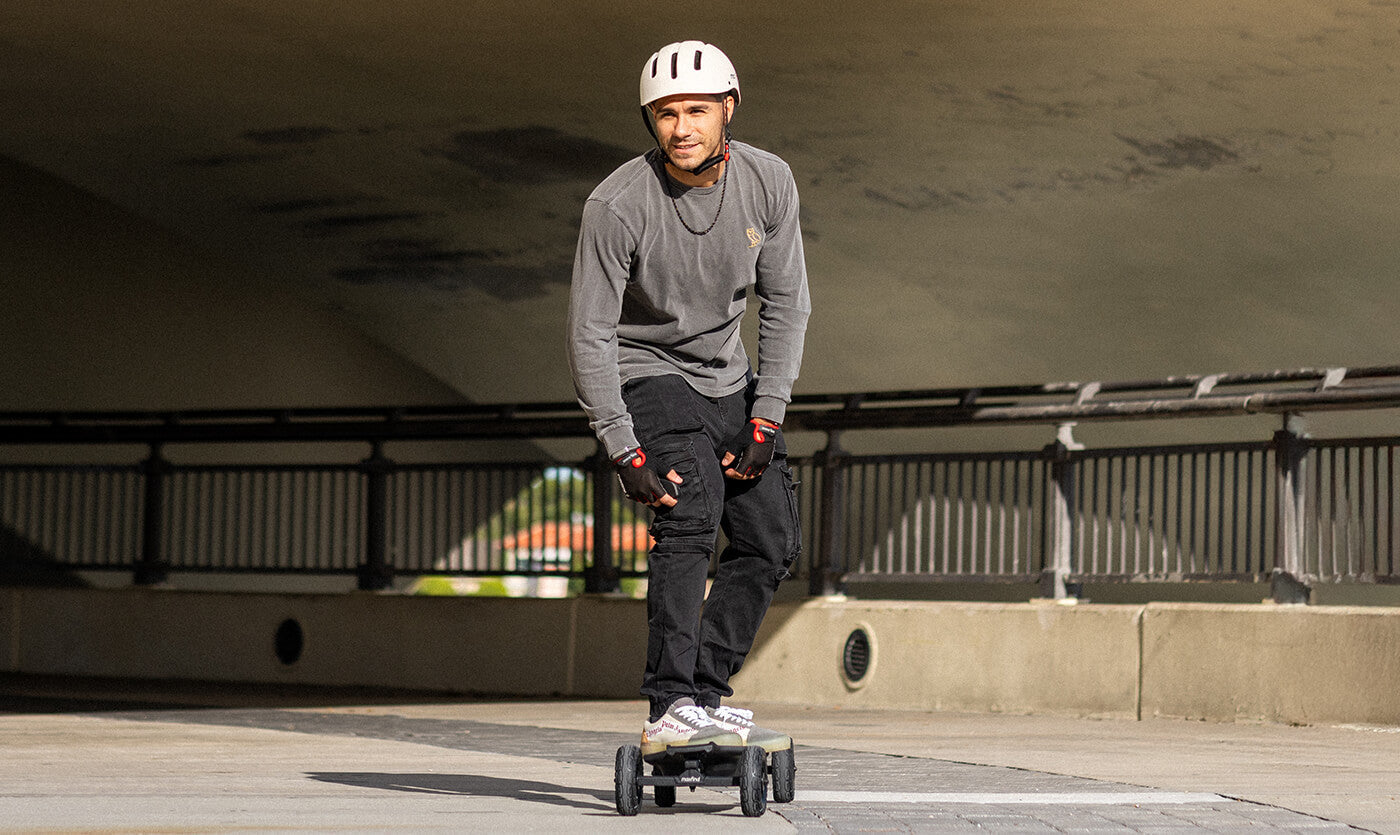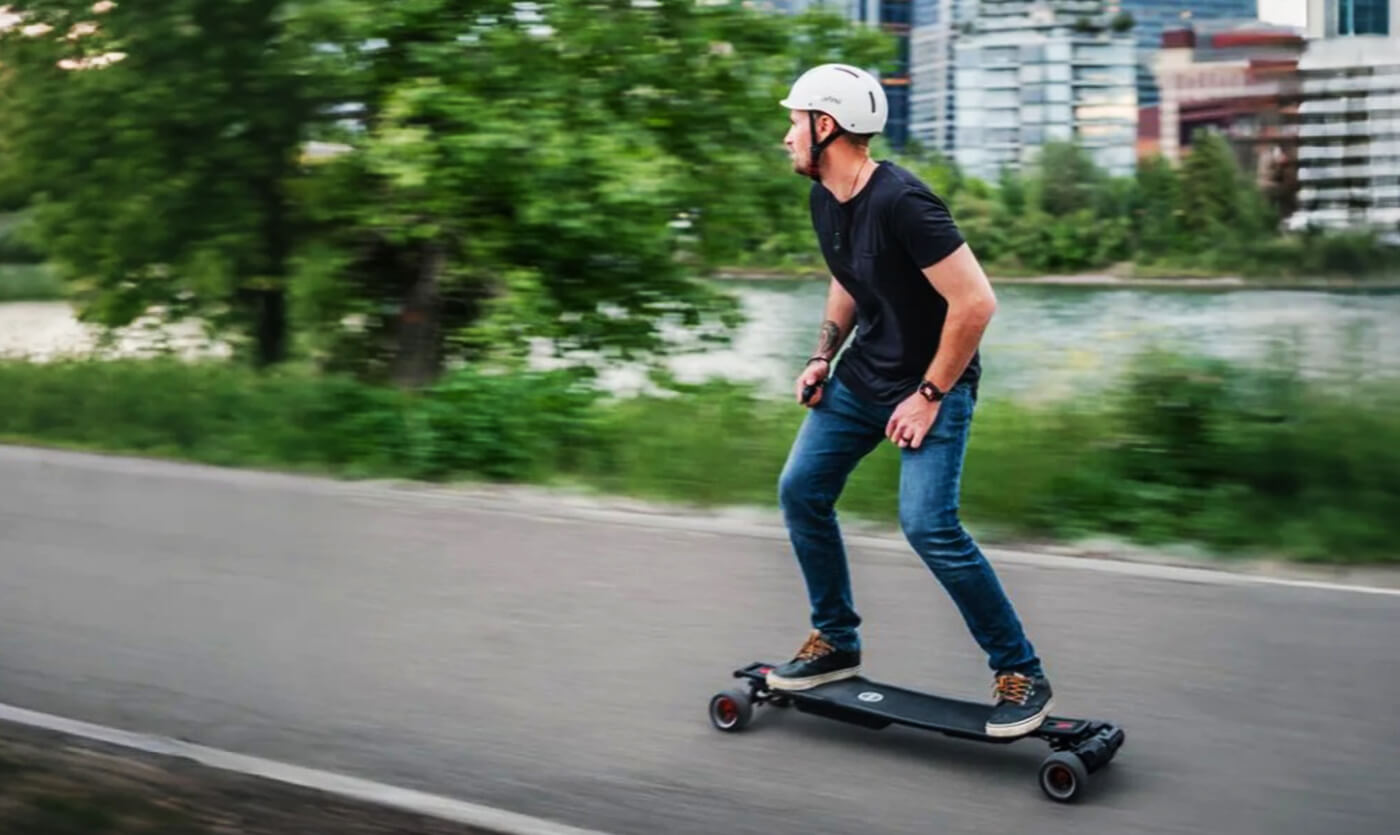If you’ve ever seen someone zooming around on a board that looks like a skateboard but moves on its own, you've probably spotted an electric skateboard. These innovative boards are equipped with motors and batteries, making them perfect for short commutes, leisure rides, and even some off-road adventures. Whether you're considering one for your daily commute or just want to try something new, this FAQ guide is here to help you get started with everything you need to know about electric skateboards.

How Do Electric Skateboards Work?
Basic Components of an Electric Skateboard
An electric skateboard is made up of a few key components that work together to give you a smooth ride:
-
Motor: This is what powers your board. It can either be in the wheels (hub motors) or connected via belts (belt-driven motors).
-
Battery: This powers the motor. Depending on the board, the battery could last anywhere from 10 to 30 miles on a single charge.
-
Deck: This is the part you stand on. It’s usually made of wood or a composite material.
-
ESC (Electronic Speed Controller): This is the system that controls the motor's speed and helps you brake smoothly.
- Remote: This handheld device controls your skateboard’s acceleration and braking. You’ll use it to change speed and stop the board.

How Does the Remote Control the Skateboard?
The remote allows you to control the skateboard by using the throttle to accelerate and the brake to slow down or stop. Most remotes have a few different speed modes, with the "beginner mode" being the slowest and easiest for new riders to use.
What Are the Key Safety Considerations for Beginners?
Why Is Safety Gear Essential?
Safety gear is non-negotiable when riding an electric skateboard, especially if you’re a beginner. The most important gear includes:
-
Helmet: Protects your head in case of a fall.
-
Knee and Elbow Pads: These help prevent injuries if you lose balance.
-
Wrist Guards: These are great for protecting your wrists, which are vulnerable when falling.
How to Ride Safely for the First Time?
When you're starting, don’t rush to go fast. Begin by riding at low speeds on smooth, flat ground. Start with a beginner mode to keep things easy and safe. Practice slowing down and stopping before trying to accelerate too quickly.
What Should You Do if You Fall?
It’s natural to be nervous about falling, but falls happen. If you do fall, try to protect your hands and wrists by using your arms to cushion the fall. Try to avoid stiffening your body as this can cause more injury. Always wear your protective gear to minimize the risk of serious injury.

How Fast Do Electric Skateboards Go?
Speed Ranges for Beginners
Electric skateboards can reach speeds of up to 25 mph, but as a beginner, you should expect to ride at slower speeds—around 10–15 mph. This is fast enough for a fun ride without compromising your safety.
Is It Safe to Ride at High Speeds?
While riding at higher speeds is thrilling, it’s important to know your limits. Stick to slower speeds until you're confident with your balance and control. Once you're more comfortable, you can increase your speed, but always remember that high speeds mean a longer stopping distance.
How Do I Choose the Right Electric Skateboard?
What Factors Should You Consider When Buying a Board?
Choosing the right electric skateboard depends on a few key factors:
-
Weight: If you need to carry your skateboard around, look for a lightweight model.
-
Battery Life: If you plan to use your skateboard for commuting, you’ll want a battery that can last 10-20 miles per charge.
-
Speed: Choose a board with the right speed for your skill level. As a beginner, you might prefer a board with a top speed of 10-15 mph.
- Terrain Type: If you’ll be riding mostly on smooth pavement, a street-focused board works well. For rougher terrain, consider an all-terrain board with larger wheels.

What Is the Ideal Range for a Beginner?
For most beginners, a range of 10-20 miles per charge is perfect. This allows you to comfortably get around without constantly worrying about recharging. If you plan on using your skateboard for longer trips, you might want to aim for a higher range.
How Much Should You Spend on Your First Electric Skateboard?
Entry-level electric skateboards typically range from $400 to $700. These boards are good for beginners and offer a nice balance of price and performance. If you’re looking for something with better performance or a longer range, you may need to spend more.
If you’re considering purchasing your first electric skateboard, we invite you to explore our range of electric skateboards at Maxfind Electric Skateboards. We offer a variety of high-quality models that cater to different needs—whether you’re a beginner looking for a reliable, affordable option or someone who wants a more advanced board with extra performance. Check out our collection to find the perfect board to fit your budget and riding style!
How to Care for and Maintain Your Electric Skateboard
Charging and Storing Your Battery Properly
To keep your skateboard in top shape, make sure to:
-
Charge the battery fully before riding and never let it run out completely.
-
Avoid overcharging: Unplug the charger once the board is fully charged.
-
Store your skateboard in a cool, dry place to prevent the battery from degrading.
Regular Maintenance Tips
-
Inspect the wheels and bearings: Make sure they’re clean and in good condition to ensure smooth rides.
-
Check the motor and deck for any loose bolts or parts that might need tightening or replacement.
-
If you’re not sure how to do this, check the manufacturer’s guide for maintenance instructions.
Can I Ride an Electric Skateboard Everywhere?
What Are the Legal Restrictions for Riding?
Before you hit the streets, it’s important to check the laws in your area. Some places treat electric skateboards like bikes, while others may have restrictions on where you can ride, like on sidewalks or bike lanes. Always check local laws to ensure you're riding legally.
Where Should You Avoid Riding?
To keep yourself and others safe, avoid riding in areas with heavy pedestrian traffic, busy intersections, or on rough terrain that could cause you to lose control. Stick to well-maintained, flat paths to ensure a smoother and safer ride.
Troubleshooting Common Problems
My Skateboard Won’t Start—What Should I Do?
If your skateboard won’t start, first check the battery to make sure it’s charged. If that’s not the issue, try checking the connections between the motor and the battery. If the problem persists, consult the user manual for troubleshooting steps or contact customer support.
What Should I Do If the Remote Isn’t Pairing with the Skateboard?
If your remote isn’t pairing, make sure the board is turned on and the remote is properly charged. Sometimes, resetting both the board and remote can solve the issue. If not, refer to the manufacturer’s guide or contact customer support for assistance.
Conclusion
Now that you’ve got the basics down, you’re ready to take your electric skateboard for a spin! Remember to start slow, wear your safety gear, and enjoy the ride. Whether you’re commuting or just cruising around, electric skateboards are a fun and eco-friendly way to get around. Keep practicing, stay safe, and most importantly, have fun!






Share:
The Ultimate Beginner’s Guide to Buying an Electric Skateboard
Transform Your Ride: How to Upgrade Your Old Skateboard to an Electric One